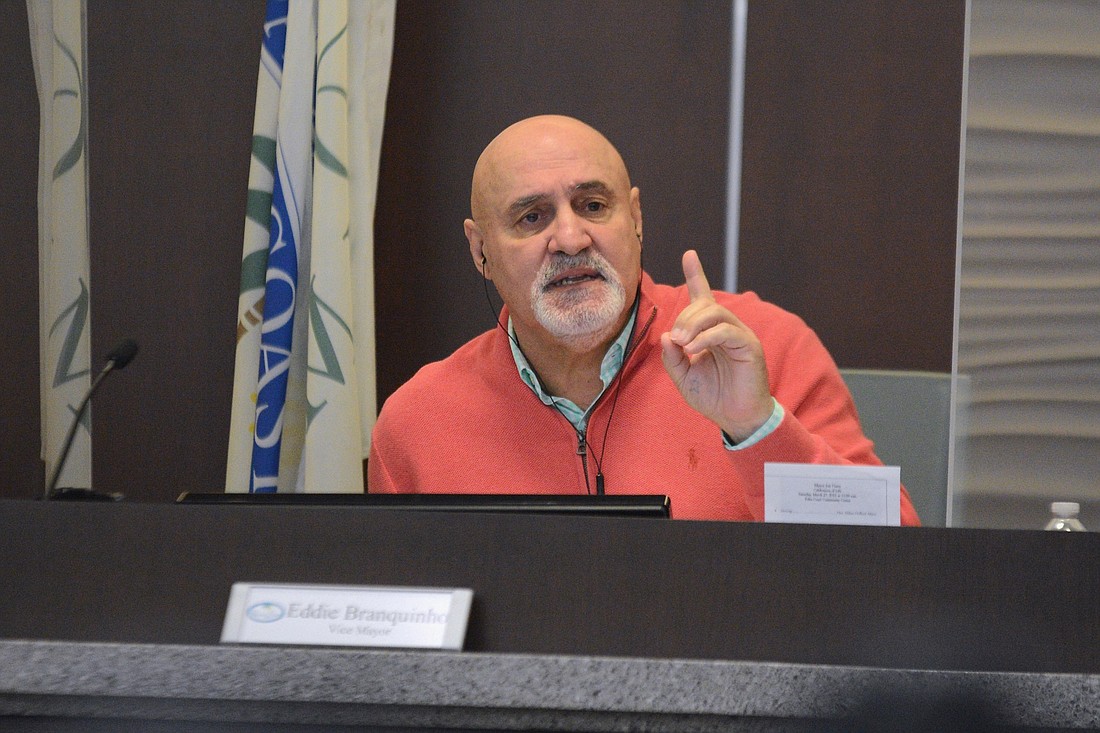- April 23, 2024
-
-
Loading

Loading

A proposal that the city government hire a consulting firm to study the city's utility rates was met with immediate skepticism from some Palm Coast City Council members at a Feb. 8 council workshop.
"I see this study not bringing anything to lower the rates for the city residents and customers.”
— EDDIE BRANQUINHO, city councilman
"I’m going to ask you one question — one simple question," Councilman Eddie Branqhuinho asked Andy Burnham, vice president of Stantec. "In every one of the cities that you can recall, was there any case — one case — where the cost for the residents, the customers, was reduced from your study?"
In fact, Burnham said, there were some: One that came to mind was Marion County.
"It's very dependent on the circumstances," Burnham said.
In Marion County's case, he said, the decrease was a result of developing more efficient operations.
"Usually what concerns me is, studies actually bring the cost up, to our residents," Branquinho said.
Councilman Ed Danko had similar reservations.
"I don’t think there’s going to be a study where the prices are going to be lower, and our citizens are all going to have to reach in their pocket and pay for those increases," he said.
He asked how frequently rate studies like Stantec's are conducted in Palm Coast. The answer was every three to five years, and the last such study in Palm Coast was in 2018.
Stantec's proposed study would involve investigating the revenue the city needs for its utility system in the future — including money needed for capital improvements, debt service and reserves, as well as operating costs — and how the costs are divided between the city's residents, businesses and industrial properties.
Stantec, incorporating expected growth into its calculations, would then present the council with options — including, potentially, rate changes.
"Making sure all utility customers pay their fair share — but only their fair share — of the cost is a big part of what the study attempts to determine, along with many other factors," Palm Coast Utility Director Steve Flanagan told the council. "These studies better ensure that the utility can, and will, stay financially healthy while attempting to hold down costs and stay in line with services rendered."
Branquinho said that he was concerned about language in Burnham's presentation about improving the utility's "cost recovery."
"If you’re going to recover any cost, who are you going to recover it from?" Branquinho said.
"It’s just commonplace in our industry: Regulation comes out and it costs money to handle that regulation."
— STEVE FLANAGAN, utility director
Flanagan said the goal would be to make sure that Palm Coast's rates will sustain it for the long term.
Branquinho asked what the study would cost. Burnham said it would be approximately $150,000.
"I'm sorry, maybe I'm being cynical about this," Branquinho said, "but spending $150,000 almost guaranteed that we’re going to raise the prices — every single one of your goals costs. ... I see this study not bringing anything to lower the rates for the city residents and customers.”
But Councilman Nick Klufas warned that ignoring utility rates and costs could cause even more expensive problems in the future.
"These are things that, eventually, someone's going to have to pay the piper," Klufas said. "Pushing this off, and then having rate shock as a result of not knowing exactly how to plan — I would hate to burden a future council with that."
He added he understood Branquinho's trepidation, but felt that the utility system and utility rates need to be looked at as a matter of the city's longterm planning.
"Our future growth is really going to depend upon our ability to serve them with necessary infrastructure, with water," Klufas said. "Even if we have to make adjustments now, these adjustments will be more slight than ... if we push this off further down the road, we have to make a more severe adjustment."
Flanagan said that the utility department is constantly looking to keep costs down.
"But in our business, there's new regulations every time we turn around," Flanagan said.
For instance, he said, there's new legislation on how cities can handle reclaimed water, and complying will be costly.
"It’s just commonplace in our industry: Regulation comes out and it costs money to handle that regulation," he said. "For the most part, I think our consultants and our staff do an excellent job of trying to hold down those costs ... and it is extremely important in our business to plan smart."
Mayor David Alfin noted that the study may also reveal opportunities to reduce costs, and that the council will determine what action to take based on the study's findings.
Flanagan said that his staff, the consulting firm and the city's finance department will work to make sure to get as much as possible out of the study to hold the city's rates as low as they can.